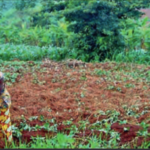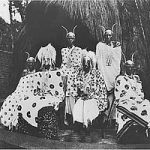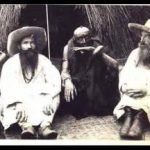X. Historical Background Of REMERA
If one were to characterize the Banyaremera, their life, their philosophy, in one single word, the best word would be “pragmatism“. To the Banyaremera, if something works, it is good and it is correct. This explains a great deal of their attitude towards religion, medicine, and agriculture.
The Banyaremera are continuously testing — whether it is by trying out a different patch of land for sweet potatoes, or probing the attitudes of their neighbors towards one another. They test their personal influence and calculate and test again just how much they can gain from any given situation or event.
This is so much an accepted part of behavior that it is even systematized in forms which appear strange to the observer. For example, in their own terms, the Banyaremera do not lie; that is, they do not lie in the sense that they do not utter a falsehood with the intent to deceive. If deception is attained it is a by-product and is unimportant. They can make the distinction between a statement that corresponds to the facts and one that does not; but it often remains irrelevant. When a statement is made it is not tested for its correspondence to the facts; it is, rather, weighed in terms of the power of the person who uttered it.The statement can take on any form, it may even be preposterous, but that is irrelevant, too. What counts is that it points to a power situation visualized as desirable by the speaker.If for any reason the speaker is stronger — with his own power backed, perhaps, by lineage or nuclear feudal cluster — his word is accepted (but not as truth). If the speaker, on the other hand, is out-numbered or bested by his superiors, there is no attempt whatsoever on hispart to maintain the original statement — whether it was true or not since it has served its purpose; it has shown the speaker where he stood in that particular play for power.
The court cases which involve the people of the Hill are practically always trials of power rather than trials of rights. A sort of equilibrium of power is thus attained and recorded between persons and between institutions. Of course, this does not govern the society, but it is a symptom of its organization.
Now, first of all, it is necessary to review the broader aspects of the Belgian administration’s program, whose reforms had, of course, an influence upon Remera.
The Belgians entered Ruanda and occupied the previously German territory of Gisaka in May 1916. After World War I, boundary parleys occurred between the Belgians and English, the latter preferring to make Gisaka an independent native kingdom. The English occupied Gisaka, then, from March 1922 until December 31, 1923. The Belgians officially returned on January 1, 1924, as Trustees of the Territory, mandated by the League of Nations.
Under the Belgian administration, as early as December 1924, the collection of certain dues in kind was prohibited by the administration. These included imponoke, the heads of cattle demanded by a patron from his clients, when, for one reason or another, the patron’s herd had become depleted; indabukirano, the dues in land or in cattle or goods given to a chief or chieftain when he took over the headship of a Hill; and abatora, the bunches of bananas taken by a patron from his clients’ banana plantations.
In 1926, three hierarchical ranks were abolished, which, until then, had retained with them certain powers of command which cut across those of the chieftains of the various Hills. These ranks had also called for dues on the part of producers to be given to the men who held the positions.
In that same year, the native tribunals were instituted. In 1927, corvée labor (uburetwa), amounting to two out of every five day’s labor due the chieftains and patrons by the peasants, was decreased officially to one day out of seven.
In 1929, the ibikingi (a type of fief), were suppressed.
In 1931, Mwami Musinga, who had consistently offered passive resistance to the European occupation and reforms, was relieved of his throne by the Belgians. His son, Mutara Rudahigwa, replaced him. In 1932, the whole system of dues in kind and in labor was reduced and fixed by law. In addition, in 1933, a program was established through which the peasants would be able — theoretically — to substitute cash for their dues in kind. At the same time, however, the Belgian administration decided to retain the practice of corvée labor because it was an expression of obedience to the chieftain on the part of the inhabitants of a Hill.
In 1936, there was a reorganization of the native tribunal system. (The first written records of court cases from these tribunals which involve people from Remera date from 1937.)
In 1939, corvée labor could be redeemed in cash by certain categories of people — which did not include the majority of peasants. In 1944 however, it was decreed that anyone could pay cash instead of doing corvée labor for his chieftain and chief. In 1949 cash, payment instead of work became compulsory.
In 1950 a Ten-Year Plan for the economic and social development of Ruanda and Urundi was initiated by the administration. Overstocking of cattle was of great concern to the administration and it was then believed that suppression of ubuhakewas necessary to overcome it. In 1954, then, ubuhake was officially abolished, and patrons were required to share the ownership of cows with their clients — the former retaining one-third of the total herd. The earliest records of this “sharing” in Remera date from 1956, but most of them occurred in 1960 when the administration set a deadline for the transactions to be completed.
In 1956, the first trial elections were held for “councilors” on every Hill in Ruanda.
The political aspects of the economy and the social structure of the period immediately preceding the period of investigation must also be scrutinized before a description and analysis of the play for power on Remera is undertaken. In order to do this, a brief look into the history of Remera is necessary.
When Baron von Goetzen entered Ruanda through Gisaka in 1894, the kingdom of Gisaka alike to Ruanda in culture — had been recently conquered and annexed as a province by Ruanda. This had occurred thirty to forty years before. The core of the province of Gisaka consisted of three chiefdoms: Gihunya, Mirenge, and Migongo. Remera was part of the first.
The chiefdom of Gihunya was headed by a chief who had received his position from the Mwami as a benefice. He was, therefore, a client of the Mwami; Gihunya was his fief and, theoretically, he had the right to establish a residence on each and every Hill in Gihunya. He administered justice, collected fines and local dues in produce (ikoro, for the Mwami; ibihunikwa, for the chief), and dues in corvée labor for his fields (uburetwa). In addition to these he collected hoes, honey, weapons, lances, bows and arrows, etc., in the name of the Mwami, and, as all chiefs were expected to do, he kept a part for himself and his court before he passed them on. The amount he kept depended largely on his political power, although it was expressed in terms of his personal cleverness, by members of the society. The chief effected these collections from the inhabitants of his chiefdom through the mediation of the chieftains who in turn collected from the heads of the lineages. The chieftains also retained a portion of the collected items.
Theoretically, the chief could give the chieftainship of a Hill to whoever he pleased. In fact, not all chieftains in Gihunya were necessarily his clients, although, to some extent, they had to pay court to him so as not to be harassed by him, since he possessed, after all, the greater political power. The chieftains of Remera, in general, seem not to have been clients of the chef of Gihunya; they were, rather, direct clients of the Mwami.
From the time Dr. Kandt was named first German Resident in 1898 up to mid-1960, Ramera had five chieftains: Mahata, Nkerabigwi, Rusine, Rwamabyogo, and Ndabobanye. Mahata was already chieftain when the European abazungu (meaning something like: “those who usurped power,” but the term is now applied to all people of fair complexion), came to Ruanda. From his sovereign he had received perhaps six or seven Hills scattered about over the entire country of Ruanda. Some were located as far from Remera as Mayaga and Kabagari in the Territory of Nyanza. These two were quite close to the capital of Nyanza where the Mwami resided.
Mahata had to spend most of his time at the court of the Mwami, as did most chiefs of that time. He left at Remera a major-domo, or a “Mayor of the Palace”, so to speak, who was acting-chieftain during his patron’s absence. However, in the world of intense competition that prevailed, there were too many chances for the major-domo to take over a position which he held in fact. Mahata had, therefore, brought to Remera from Central Ruanda, not only several clients, but also three of his brothers: Ntumpira, Sebahene, and Tabaro, whom he installed on Remera to protect his interests by giving them each a fief called an igikingi (pl. ibikingi,). Other Tutsi who had paid court to him also held various ibikingi on Remera. One of them was the head of a local Tutsi lineage; others were Tutsi who had either lost favor elsewhere, or were dissatisfied with their patrons and had sought better conditions under Mahata. Some had originally come from Ndorwa, others from Rukiga.
When Mahata became old, he installed his son, Nkerabigwi, as chieftain of Remera. At that time, however, the Belgian administration seems to have demanded of the Tutsi that they sell cattle and milk to them or to some designated umuzungu (pl. abazungu). To escape this levy, it seems that many Tutsi left Remera. Nkerabigwi left among them; his benefice, i.e. Remera, was now considered by him to have become a burden. This was about 1930. At this point, the chieftainship of Remera fell into the hands of an interim chieftain who remained in the position only a few months.
At the time that Mahata held the Remera chieftainship, the great-grandfather of the man who was chieftain while the author was at Remera, Ndabobanye, held the chieftainships of a number of Hills around Remera Rukira, Muhurire, Rundu, Bisenga, and Karama. He also was a direct client of the Mwami. His son, Batenda, inherited the chieftainship of the Hills from him. In addition, Batenda claimed to have received Kibaya as an additional fief from the Mwami and he attempted to remove the chieftain who held Kibaya. The case was finally brought to the court of the Mwami who decided to leave Kibaya to its actual chieftain, and he enfiefed a Hill named Gitara to Batenda, instead.
In 1931, when the Mwami Yuhi Musinga was deposed by the administration, a reshuffling of chieftaincies followed. Batenda lost the Hills of Rukira, Muhurire, Rundu, and Karama, but he gained those of Nyagatovu, Rugorigondi, and Rubona, while retaining Bisenga and Gitara.
At this time, a son of Batenda by name of Ndabaretse was a schoolteacher in Nyanza — probably placed there by his father with instruction to remain there to pay his court to the Mwami. When Ndabaretse heard that Nkerabigwi, Mahata’s son, had vacated the Hill of Remera he went to the Mwami Musinga and asked for the chieftaincy of Remera. He obtained it. (It must be kept in mind, however, that, always, these nominations had to be cleared by the Belgian administration before they could be effected.) Ndabaretse took over the demesne — including the cattle demesne herd.He immediately enfiefed His Remera chieftainship to His younger brother Rwamabyogo.
Approximately four or five years later, in 1935 or 1936, Batenda, feeling that he was getting old, “gave” the Hills of Bisenga, Gitara, Rubona, Nyagatovu, and Rugorigondi to Rwamabyogo. This move obviously had the blessings of the Belgian administration which was seeking to consolidate the small chieftaincies into larger units, which were easier to control. However, Rwamabyogo Who will appear later in competition with the Hutu lineage ofthe Abavuna), was liked neither by the administration, nor by his constituents. He was deposed by the administration at the end of 1942.
Rwamabyogo was replaced by Ndabobanye, a younger son of Ndabaretse, in January 1943. During the previous years Ndabaretse had been chief of the chiefdom of Rukoma. But, because of various intrigues and varying influences that prevailed of the court of the Mwami, he lost his chiefdom and was deposed. He was later restored to his wealth, if not to his chiefship. He retained, however, other fiefs and many clients in his old chiefdom, although he was not allowed to reside there. He remained near the Mwami’s court in Nyanza. When his son, Ndabobanye, was named to the chieftainship of Remera, he sent him off with six councilors. All, with the exception of one Hutu, were Tutsi clients of Ndabaretse who had held “charges” (in the feudal sense of duties or obligations imposed upon certain courtiers), at the rugo of their patron. The Hutu was a direct client of the young Ndabobanye. For the following seventeen years Ndabobanye was the chieftain of Remera, Bisenga, Rugorigondi, Nyagatovu, Rubona, and Gitara. He seems to have been conscientious enough in a world where abuse was an integral part of the system. He was liked by his constituents and in the records of the administration was consistently graded “very good,” and “excellent” (“elite”). Ndabobanye was voted out of office in the elections held in July 1960, when his party boycotted the elections.
https://uk.amateka.net/x-historical-background-of-remera/https://uk.amateka.net/wp-content/uploads/2021/05/idini.jpghttps://uk.amateka.net/wp-content/uploads/2021/05/idini-150x150.jpgModel CitizenshipIf one were to characterize the Banyaremera, their life, their philosophy, in one single word, the best word would be 'pragmatism'. To the Banyaremera, if something works, it is good and it is correct. This explains a great deal of their attitude towards religion, medicine, and agriculture. The Banyaremera are...BarataBarata rpierre@ikaze.netAdministratorAMATEKA | HISTORY OF RWANDA




